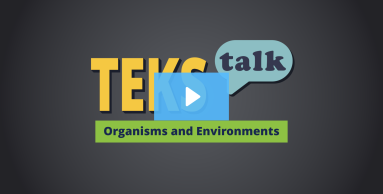
Knowledge and Skills Statement
Research
Department of Education. 2019. "The Environment: Living and Nonliving Things." Science Continuum Archive. Victoria State Government: Department of Education.
https://www.education.vic.gov.au/school/teachers/teachingresources/discipline/science/continuum/Pages/environment.aspx.
Summary: Misconceptions students may have about the interdependency between living and non-living things in ecosystems are addressed in this article. Students may believe that only animals interact with their environment and that these ecosystems cannot be found in their environments, such as their school playground or backyard. Living things depend on non-living things, such as rocks, sticks, air, and water, to survive. Students need to experience viewing ecosystems first-hand. They should use science tools and journals to record long-term observations and observe animal life cycles, seasonal changes, and adaptations. This article provides ways that students can present their data after making observations.
